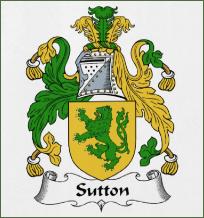 |
||||
Life in York County
To best understand what life was like in the times which will follow, I have copied an article from Louse Pettus from The Charlotte Observer, which shows the census results from 1790 until 1870.
“The year 1990 marks the bicentennial of the U.S. census and the 20th time a census has been taken of York County inhabitants.
The first censuses were simple affairs, listing only the names of the heads of households, race and males and females in age groupings. Still, the records are important for what they reveal.
York District in 1790 had 6,604 inhabitants with a population density of fewer than six people per square mile. The number of children exceeded the number of adults and there were more males than females. Blacks made up about 16% of the population. Of that number, 29 were noted as “FC,” for Free Colored.
By the second census, the population had shot up dramatically. The 1800 census showed a population of 10,248. More than 3,000 were under 10 years of age. About 900 were over 45 years of age. This points out one of the great differences between then and now. There were relatively few elderly people in 1800. The number of slaves had nearly doubled in 10 years.
The 1810 census showed 216 fewer whites and 1,360 more slaves in the county. The effect of the invention of the cotton gin (1794) can clearly be seen. Cotton plantations and their use of slave labor had come to the Upcountry.
In 1850, York District had a population of 19,433 (Chester had a population of 17,810 and Lancaster 8,661). Of York’s population, 11,426 were white and 8,007 were slaves. Births in 1849 totaled 385 and deaths were 155.
The 1850 population census was accompanied by an agricultural census and an industrial census. There were 4, 1233 horses, 1,229 mules, 4,625 milk cows, 155 working oxen and 10,373 “other cattle.” In other words, cows, horses, and mules slightly outnumbered the human population - another sign that it was an agricultural society.
The only town in the county was Yorkville, which had a population of 511.
The dominant religion was Presbyterian (as it had been from the beginning). In 1850, the county had 10 Presbyterian churches with 3,620 members besides the Free Presbyterian Church, which had one church building and 300 members. The Methodists had five churches with 1,738 members, and the Baptists had seven churches with 1,450 members.
York District in 1850 had five colleges of academies with six teachers and 168 pupils; 509 adults were listed as able to read and write.
The 1860 manufacturing census for York District shows 51 businesses, of which 27 were flour and meal mills and 11 were saw mills. The other were listed as blacksmith, one; boots and shoes, three; carriages, two; leather, three; liquors, distilled, two; marble and stone work, one; and saddlery and harness, one. There were 126 industrial workers, all men.
The 1870 census was the first after the Civil War. The number of horses had decreased by more than half - undoubtedly reflecting losses of the war - but the number of mules increased. There were fewer industries (42 listed as manufacturing in 1870), but the number of workers increased to 154 since the last census. A gold mine employing 10 workers was added to the list. The county did not yet have a cotton mill.
In 1870, farms were smaller in acreage than they had been a half century earlier. Only three were larger than 1,000 acres and only three were 500 to 1,000 acres. There were 557 farms between 20 and 50 acres.
It is difficult to compare the value of land , produce and manufacturing over a long span of time - particularly using the limited statistics available before this century - but economic historians have calculated that it was not until World War II that the Southern states were able to achieve the same standard of living they enjoyed on the eve of the Civil War. York County undoubtedly was no different.”
